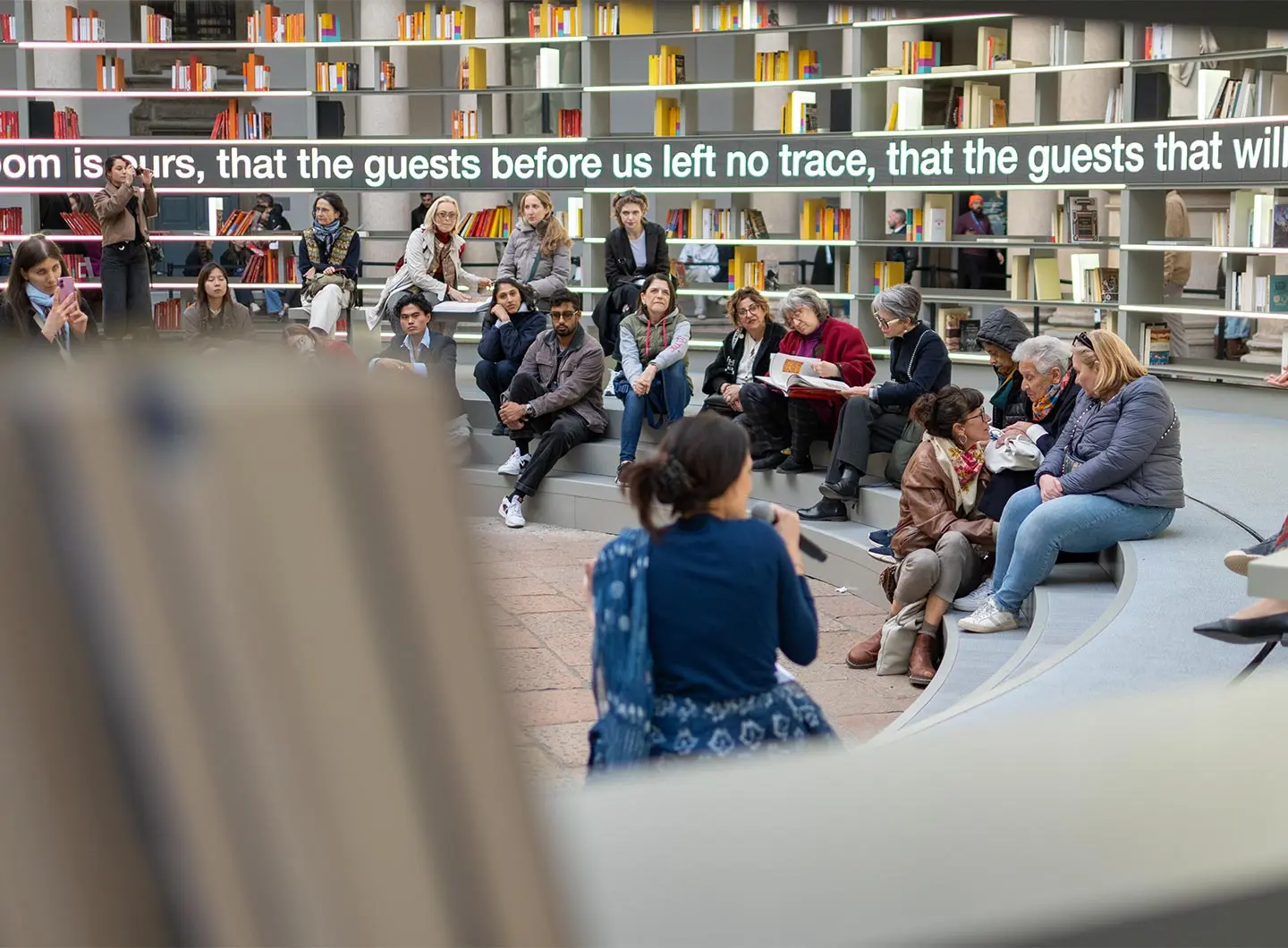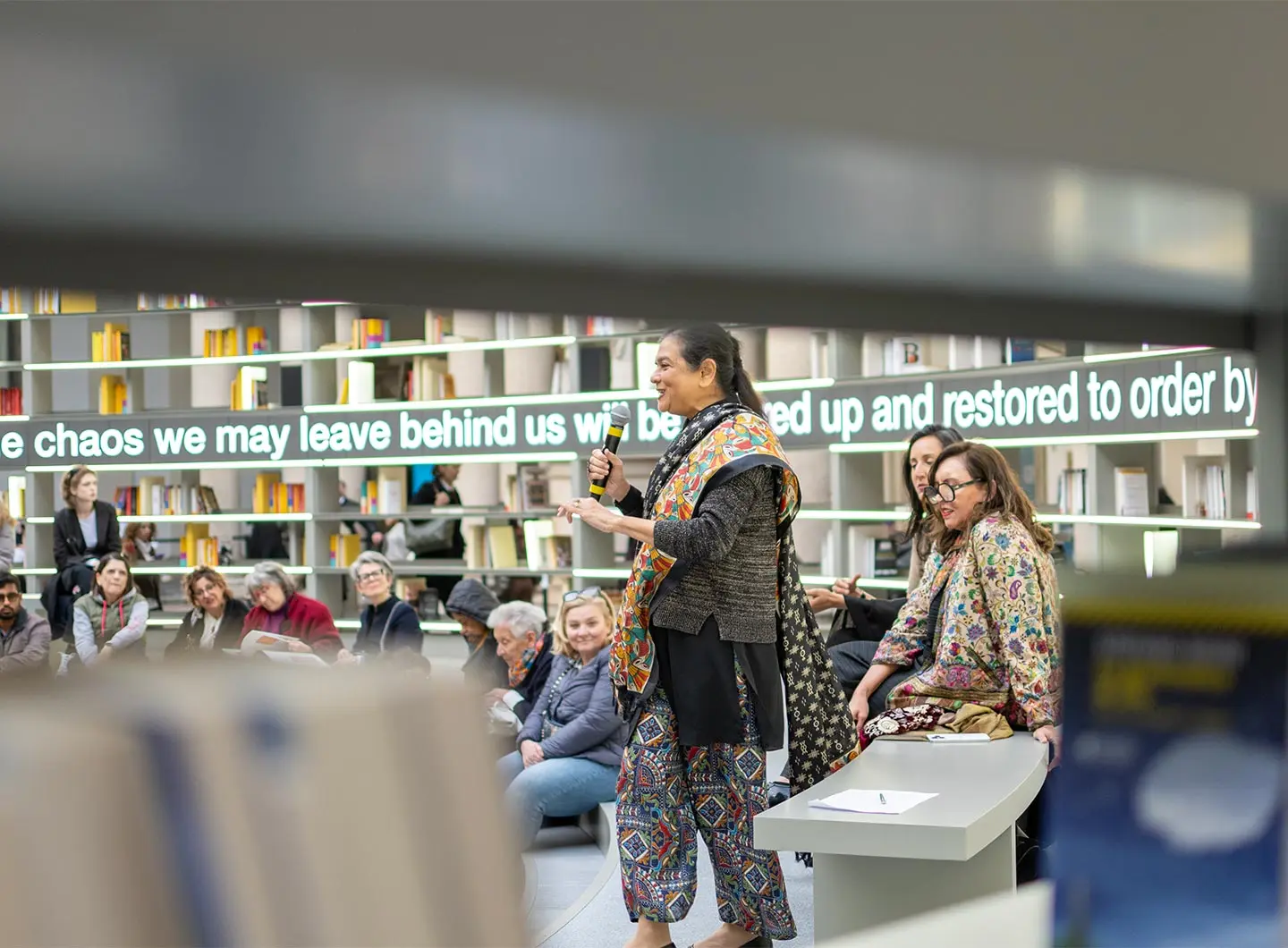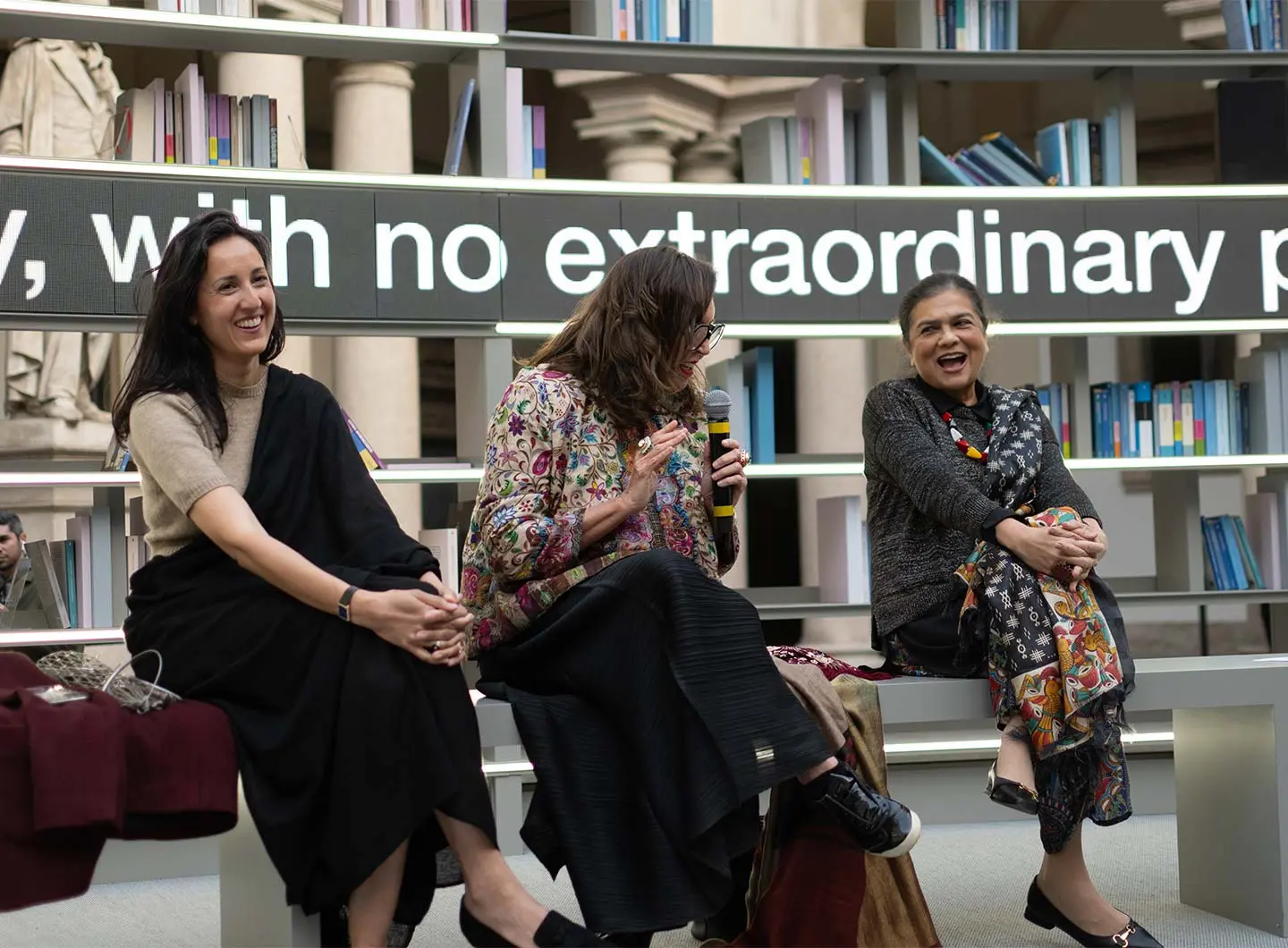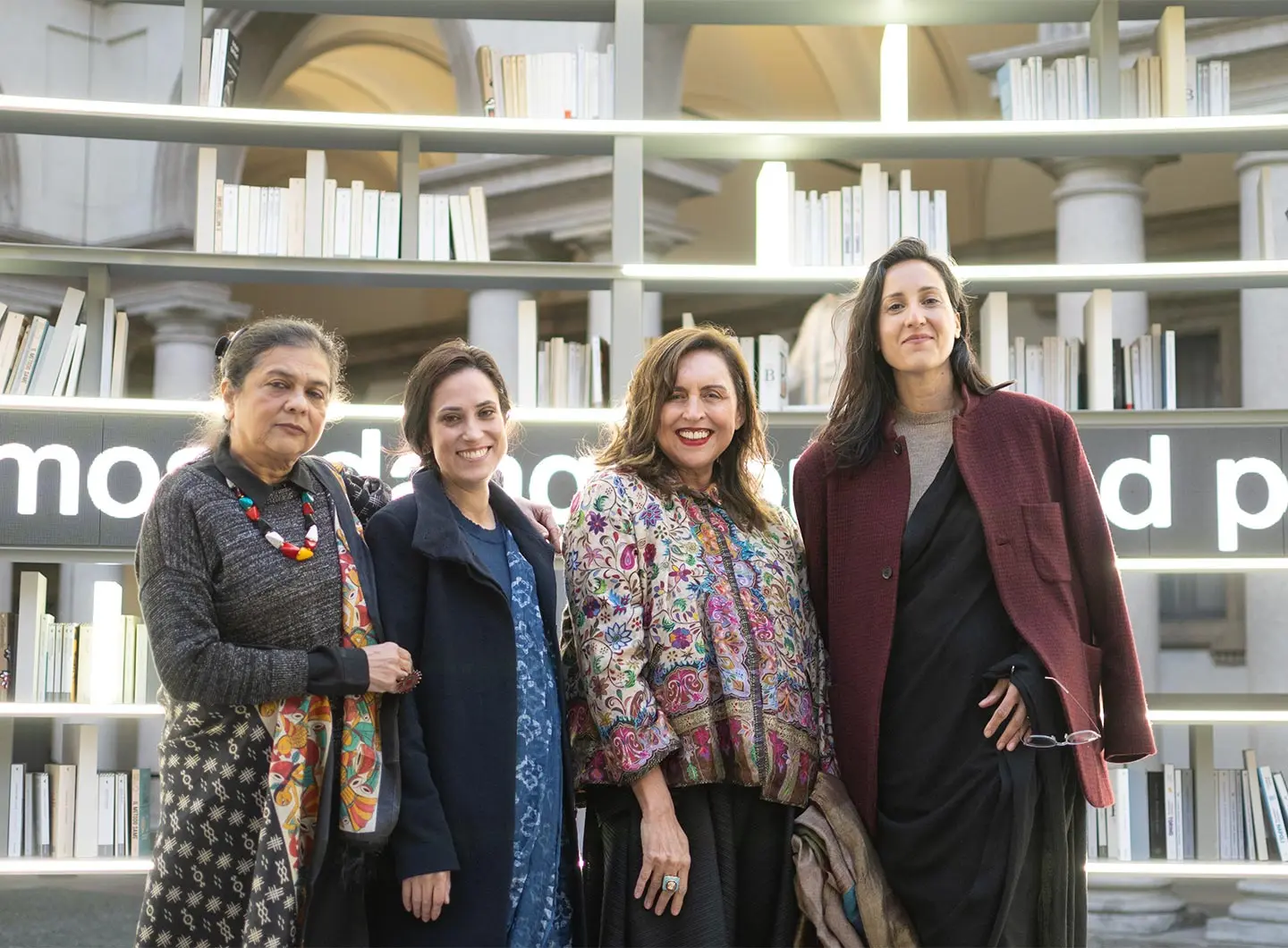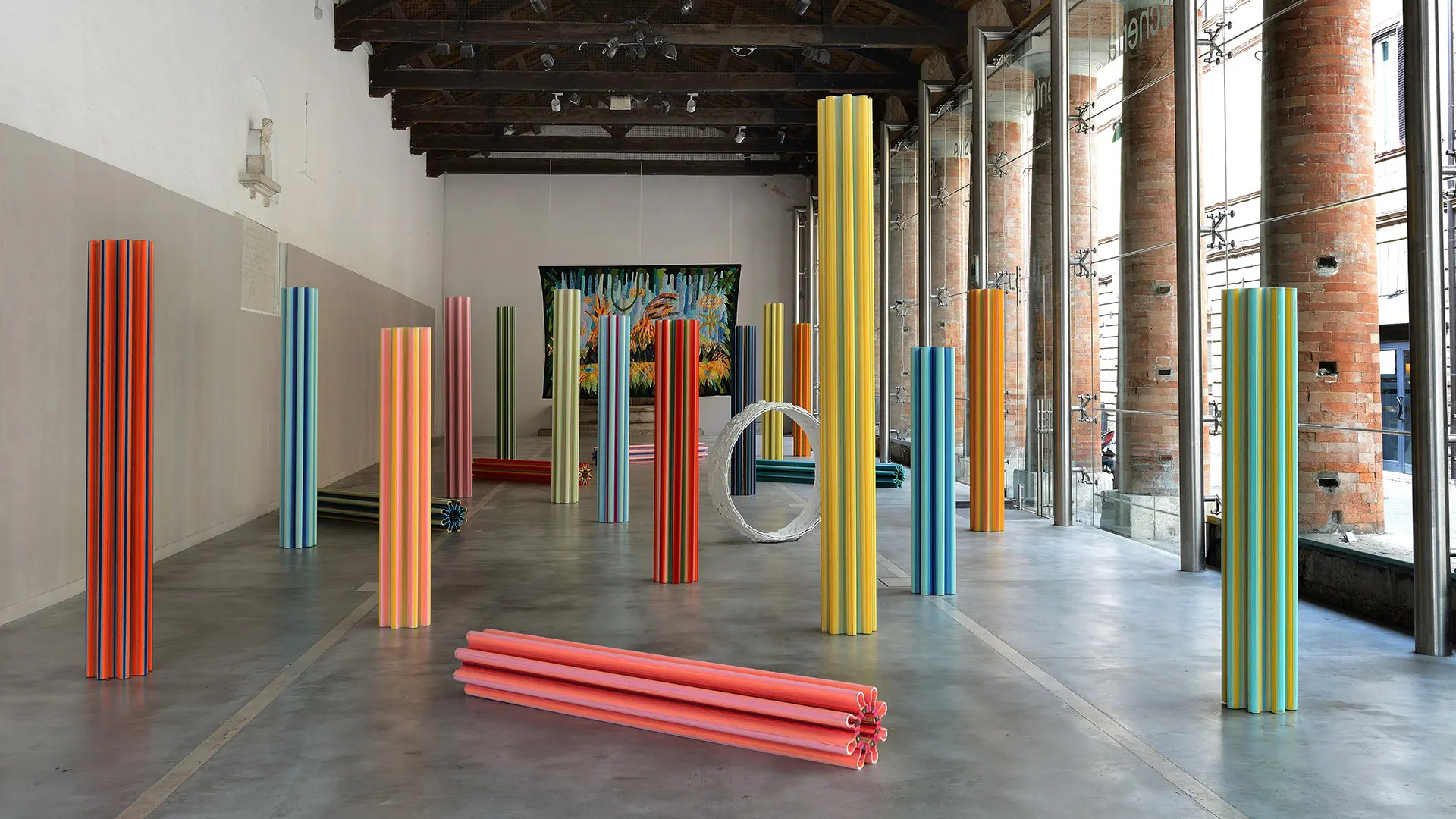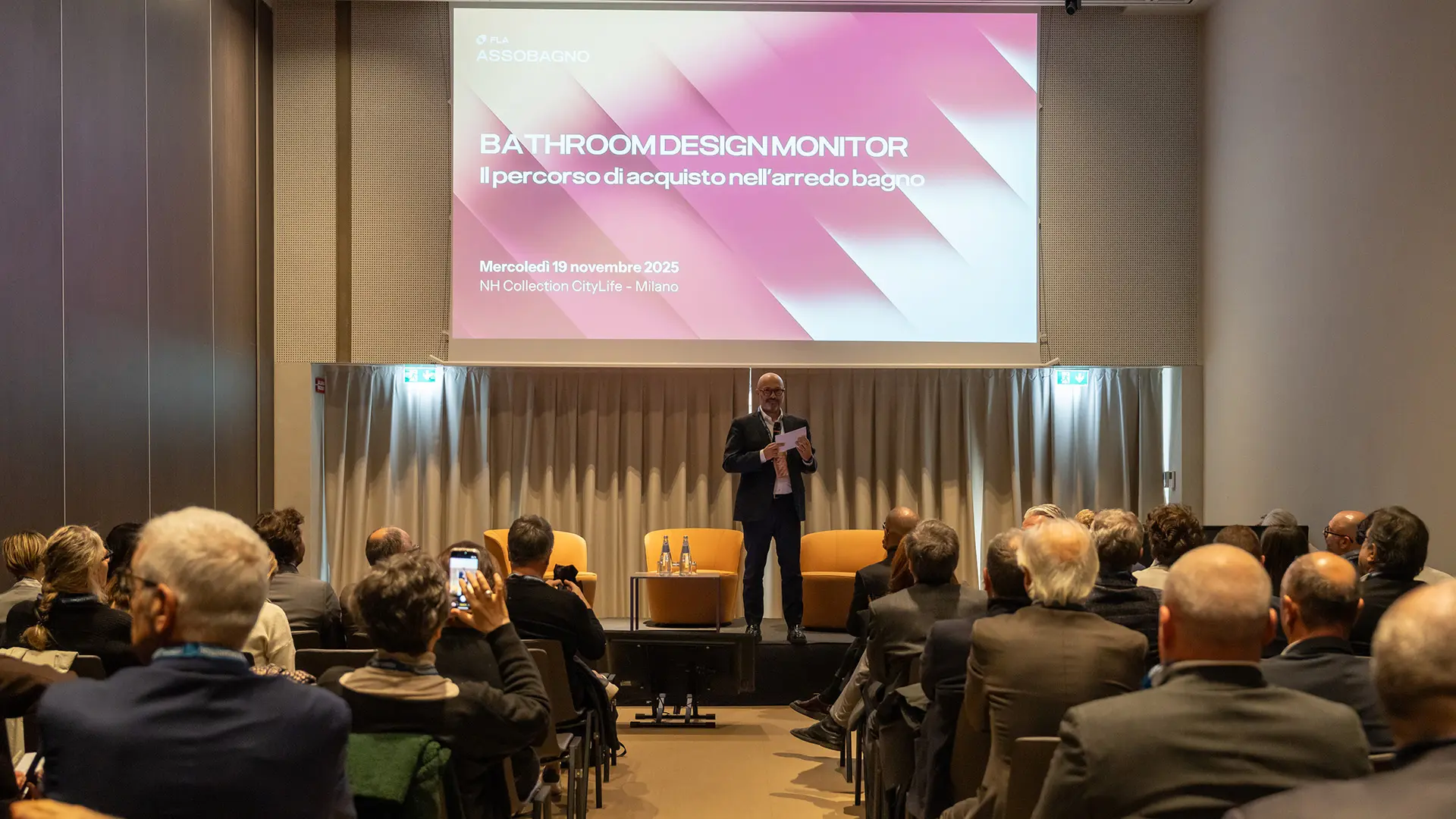They are all Italian and all in some way draw on the theme of memory. This is true even when they deal with current sporting events associated with the imminent inauguration of the Winter Olympics. There are ten of them and for the most part they are held in the most reserved cultural circuits, outside the mainstream. It’s even better when they’re out of town, bringing historic residences to life with gleams and flashes of good design
Weaving Indian Art: tradition, contemporaneity and design
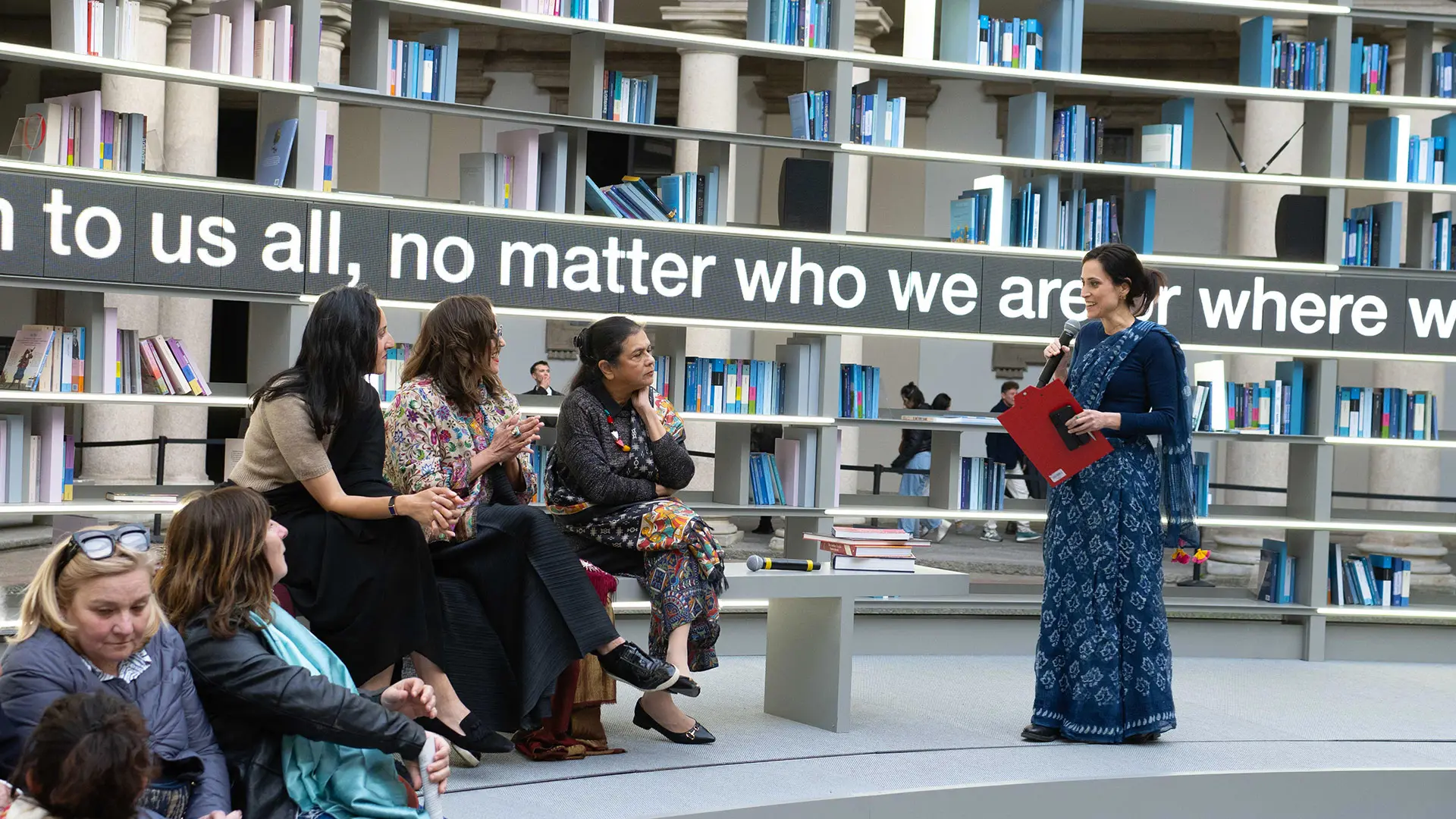
Weaving Indian Art, Library of Light, Salone del Mobile.Milano 2025
A talk at the last Salone del Mobile explored the way in which Indian textiles, long labelled in the West as simple craftsmanship from the global south, are gaining recognition as a true art form. Thanks also to collectible design
The story of the excellence of Indian yarns is one of the oldest in the world, to such an extent that the first dyed fabrics found in the region are said to date back to 2500 BC. Since ancient times, textiles from that part of the world were so renowned that in Ancient Greece and Babylon the word "India" was synonymous with "cotton." With such a significant background, it is easy to see why textiles have been, and still remain, deeply intertwined with Indian culture and art, as well as its contemporary society.
This formed the starting point for the conversation held during the last Salone del Mobile edition at the Library of Light, the luminous rotating sculpture designed by Es Devlin for the Salone del Mobile in the centre of the seventeenth century Cortile d’Onore at the Pinacoteca di Brera. Taking part were the interior designer and influencer Vinita Chaitanya, the writer and university lecturer Urmila Chakraborty and the consultant and founder of Border&Fall, Malika Verma. Underpinning the talk – appropriately entitled Weaving Indian Art – was the fact that Indian textiles have been a refined art form for centuries, embodying skills, tradition and cultural identity.
Craftsmanship or art?
The range of these beautiful textiles is wide and starts from skilfully-woven thread, culminating in intricate fabric draperies. Muga silk, for example, is obtained by unrolling the cocoon of the silkworm, obtaining a smooth and shiny material (entirely different from Eri silk, spun as if it were wool, soft and opaque). Many thousands of examples of decoration exist, including the intricate embroideries using metal thread, known as zardosi, highly esteemed by the Mughal emperors. Few people today remember that chintz, highly sought-after in Europe during the 1600s, came from India and was known as kalamkari – while the much-exported paisley pattern is known in Northern India as buta or boteh. Despite so much creative expression, thanks to the British colonial exploitation of the local economy, in the Western world, Indian textiles have been relegated to the category of craftsmanship for too long, rather than being recognised as an art in their own right.
Malika Verma reminded the audience of the purpose of this discussion: the increasingly blurred boundaries between art and craftsmanship. Which is why it is crucial to ask a fundamental question: can the recognition of Indian textiles as an art form enhance the work of craftspeople? “Broadly speaking, the craft sector requires greater economic value placed on the maker, skill and end object. We still have a lack of accountability and transparency in that regard. Perhaps recognising it as an art form is one way to achieve this, given that industry has more formalised systems of value,” she said.
Folk art
When it comes to excellence, the examples are infinite. In the north there are the finely worked brocades and Moghul-inspired patterns. In Gujarat, Patan Patola ikat calls for almost mathematical precision of execution. Andhra Pradesh Kalamkari is absolutely on a par with painting on fabric, narrating mythological and ancient stories. Pattachitra, on the other hand, is an ancient Bengali pictorial tradition in which the cloth literally becomes a canvas to tell stories, originating near Kolkata. A genuine form of folk art, which has been the subject of Professor Chakraborty's studies for many years. It is rooted in the oral and popular tradition of wandering storytellers - a fascinating and unique expression of "poor art," aimed at telling stories through images and music. Chakraborty works in particular with one of the most representative villages of West Bengal, and especially with women storytellers from the village of Naya, in the Pingla area: “For a country like India that is ancient and, equally, always future-facing, it is essential to preserve this form of art. It is both art and craftsmanship, because on one hand it has a creative, innovative and popular tradition. On the other, it not only produces textile paintings, but also scarves, clothes, trays, cups and many other artefacts.”
Collectible design and textiles
Now here’s a point: despite their complexity, textile traditions have often been dismissed as mere "craftsmanship" because they were born with a functional purpose. Industrialisation then saw Indian textiles become consumer goods. But, in a sense, that process is now being reversed, Professor Chaitanya explained: “I have a strong bond with the textile tradition and the excellence of Indian fabrics, which have always played a central role in my work as an interior designer.”
Textile art and craftsmanship today are closely linked to the world of Indian design. The world of fashion design certainly calls the shots, as Ms Verma well knows – Border&Fall’s famous online project, the digital anthology Sari Series, documented the ways saris are worn in the various regions of India. These days, an increasing number of Indian stylists recognised at global level are showing the world that Indian textiles are not just ornamental, but are also the upshot of articulating intellectual and artistic expressions. The step towards product designers is short, Chaitanya concludes: "The world of Indian collectible design is flourishing right now and could be the key to successfully bridging the gap between craftsmanship and art." Hope, in this case at least, is just a thread away.


 Exhibitions
Exhibitions
